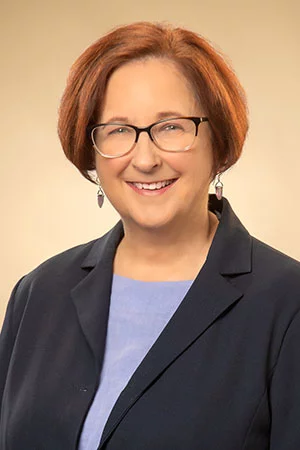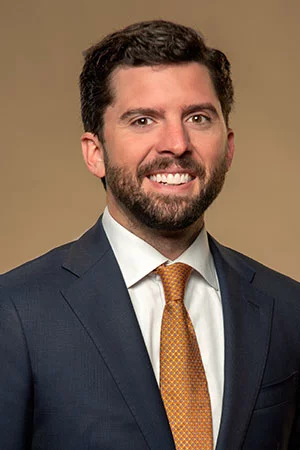Post-Traumatic Stress Disorder (PTSD) and addiction are deeply intertwined, often creating a vicious cycle that is difficult to break. Individuals suffering from PTSD frequently turn to substances as a way to cope with the overwhelming and distressing symptoms of their trauma. This self-medication, however, can lead to addiction, further complicating their mental health and making recovery more challenging. In this blog, we will explore the complex connection between PTSD and addiction, discuss the prevalence of co-occurring disorders, explain the underlying mechanisms that link these conditions, and emphasize the importance of integrated treatment approaches for achieving long-term recovery.
Understanding PTSD: A Brief Overview
PTSD is a mental health condition that can develop after an individual experiences or witnesses a traumatic event. This could include situations such as combat exposure, sexual assault, natural disasters, serious accidents, or any other event that causes intense fear, helplessness, or horror. The symptoms of PTSD can be debilitating and may include flashbacks, nightmares, severe anxiety, and uncontrollable thoughts about the event. These symptoms often disrupt a person’s daily life, making it difficult to function normally.
For many, the emotional pain and psychological distress associated with PTSD can become overwhelming. In an attempt to numb these feelings or escape from the persistent memories of the trauma, some individuals turn to drugs or alcohol to cope. This coping mechanism, while initially providing temporary relief, often leads to addiction.
The Prevalence of Co-Occurring Disorders
The co-occurrence of PTSD and substance use disorders (SUD) is more common than many realize. Studies suggest that up to 50% of individuals with PTSD also struggle with addiction. This statistic highlights the significant overlap between these two conditions and underscores the need for greater awareness and more effective treatment strategies.
The relationship between PTSD and addiction is bidirectional. On one hand, individuals with PTSD may use substances as a way to self-medicate and alleviate their symptoms. On the other hand, prolonged substance use can increase the risk of developing PTSD, especially if the substance use leads to risky behaviors or environments where trauma is more likely to occur. Additionally, substance use can exacerbate PTSD symptoms, creating a cycle that is difficult to break without proper intervention.
The Underlying Mechanisms: How PTSD and Addiction Are Linked
To fully understand the connection between PTSD and addiction, it is essential to explore the underlying mechanisms that link these conditions. The brain’s response to trauma plays a central role in this connection.
The Brain’s Response to Trauma
When a person experiences a traumatic event, their brain goes into survival mode. The amygdala, a region of the brain responsible for processing emotions, particularly fear, becomes hyperactive. This heightened state of arousal is intended to help the individual respond quickly to danger. However, in people with PTSD, this response becomes chronic, leading to persistent fear and anxiety even when the threat is no longer present.
The prefrontal cortex, which is responsible for reasoning and decision-making, often becomes less active during this time, making it difficult for individuals to rationalize their feelings or control their responses. Additionally, the hippocampus, which is involved in memory formation, may also be affected, leading to fragmented or intrusive memories of the trauma.
The Role of Substances in Alleviating PTSD Symptoms
Given the brain’s response to trauma, it’s understandable why individuals with PTSD might turn to substances. Drugs and alcohol can temporarily reduce anxiety, numb emotional pain, and provide a sense of relief from intrusive thoughts and memories. For example, alcohol depresses the central nervous system, leading to feelings of relaxation and detachment. Similarly, drugs like opioids or benzodiazepines can produce calming effects, reducing the intensity of PTSD symptoms.
However, these substances alter the brain’s chemistry, particularly the reward system. The brain starts to associate substance use with relief from distress, reinforcing the behavior and making it more likely that the individual will continue using the substance as a coping mechanism. Over time, this can lead to physical dependence and addiction.
The Challenges of Treating Dual Diagnoses
Treating individuals with both PTSD and addiction, known as a dual diagnosis, presents unique challenges. Traditional treatment approaches often focus on one condition at a time, which can be ineffective for individuals with co-occurring disorders. For example, treating only the addiction without addressing the underlying PTSD can lead to relapse, as the individual may return to substance use to cope with their unresolved trauma. Similarly, focusing solely on PTSD without addressing the addiction can hinder recovery, as the individual may continue using substances that interfere with their progress.
Several factors contribute to the complexity of treating dual diagnoses:
Interconnected Symptoms: The symptoms of PTSD and addiction often feed into each other, making it difficult to distinguish where one condition ends and the other begins. This interconnectedness requires a comprehensive treatment approach that addresses both conditions simultaneously.
Stigma and Shame: Individuals with dual diagnoses may face significant stigma, both from society and within the healthcare system. They may feel ashamed of their substance use or be hesitant to seek help for their PTSD, fearing judgment or misunderstanding. This stigma can prevent individuals from accessing the care they need and contribute to a sense of isolation.
Treatment Resistance: People with dual diagnoses may be resistant to treatment due to the chronic nature of their conditions and the difficulty of managing both simultaneously. Additionally, the self-medication aspect of substance use can make individuals reluctant to give up their primary coping mechanism, even if it is ultimately harmful.
The Importance of Integrated Treatment Approaches
Given the challenges associated with treating dual diagnoses, integrated treatment approaches are essential. Integrated treatment involves addressing both PTSD and addiction simultaneously through a coordinated and comprehensive plan that includes various therapeutic modalities.
Trauma-Informed Care
A key component of integrated treatment is trauma-informed care, which recognizes the impact of trauma on an individual’s mental health and substance use. Trauma-informed care involves creating a safe and supportive environment where individuals feel respected and understood. It also emphasizes the importance of building trust between the patient and the treatment provider, as well as acknowledging the individual’s trauma history in the treatment process.
Trauma-informed care can include various therapeutic approaches, such as:
- Cognitive-Behavioral Therapy (CBT): CBT helps individuals identify and change negative thought patterns and behaviors associated with both PTSD and addiction. Trauma-focused CBT, specifically, addresses the traumatic memories and their impact on the individual’s current behavior and mental health.
- Eye Movement Desensitization and Reprocessing (EMDR): EMDR is a therapeutic approach that helps individuals process traumatic memories by focusing on specific eye movements while recalling the traumatic event. This process can reduce the emotional intensity of the memory and help individuals gain a new perspective on their trauma.
- Mindfulness-Based Therapies: Mindfulness practices, such as meditation and yoga, can help individuals with PTSD and addiction manage their symptoms by promoting relaxation, reducing stress, and increasing self-awareness. These practices can also help individuals develop healthier coping mechanisms that do not involve substance use.
Medication-Assisted Treatment (MAT)
For some individuals, medication-assisted treatment (MAT) may be a necessary component of integrated care. MAT involves the use of medications, in combination with therapy, to address both PTSD and addiction. For example, certain antidepressants or anti-anxiety medications can help alleviate PTSD symptoms, while medications like methadone, buprenorphine, or naltrexone can help manage opioid addiction.
It is important to note that MAT should be carefully monitored and tailored to the individual’s specific needs. The goal is to provide relief from symptoms while minimizing the risk of further dependence or misuse of medications.
Holistic and Supportive Services
In addition to therapy and medication, holistic and supportive services play a crucial role in integrated treatment. These services address the broader aspects of an individual’s life, such as their physical health, social connections, and overall well-being. Examples of holistic and supportive services include:
- Peer Support Groups: Peer support groups, such as 12-Step programs or PTSD support groups, provide individuals with a sense of community and understanding. Sharing experiences with others who have faced similar challenges can reduce feelings of isolation and provide valuable insights and encouragement.
- Family Therapy: Family therapy involves the individual’s loved ones in the treatment process, helping to repair relationships, improve communication, and build a supportive home environment. Given the impact of PTSD and addiction on family dynamics, involving family members in treatment can be beneficial for both the individual and their family.
- Physical Health and Wellness Programs: Physical health is often compromised in individuals with dual diagnoses, so incorporating wellness programs that focus on nutrition, exercise, and overall health can support recovery. These programs can also help individuals develop new, healthy routines and habits that contribute to their overall well-being.
Achieving Long-Term Recovery: Best Practices
Long-term recovery from PTSD and addiction is possible, but it requires a comprehensive and sustained effort. Best practices for achieving long-term recovery include:
Ongoing Support and Aftercare: Recovery does not end when formal treatment does. Ongoing support and aftercare services, such as continued therapy, regular check-ins with a healthcare provider, and participation in support groups, are essential for maintaining progress and preventing relapse.
Relapse Prevention Planning: Developing a relapse prevention plan is crucial for individuals with dual diagnoses. This plan should include strategies for managing triggers, coping with stress, and seeking help when needed. It should also identify potential warning signs of relapse and outline steps to take if these signs arise.
Self-Care and Coping Strategies: Encouraging individuals to prioritize self-care and develop healthy coping strategies is vital for long-term recovery. This can include activities such as exercise, creative expression, mindfulness practices, and spending time in nature. Developing a strong support network and setting realistic goals for personal growth are also important components of self-care.
Education and Awareness: Educating individuals and their loved ones about the connection between PTSD and addiction, as well as the importance of integrated treatment, can empower them to take an active role in their recovery. Awareness of the challenges and complexities of dual diagnoses can also reduce stigma and encourage more compassionate, understanding responses from society.
The connection between PTSD and addiction is complex and multifaceted, but understanding this relationship is crucial for effective treatment and long-term recovery. By recognizing the prevalence of co-occurring disorders, exploring the underlying mechanisms that link PTSD and addiction, and emphasizing the importance of integrated treatment approaches, we can provide individuals with the comprehensive care they need to heal from both their trauma and their addiction.
Achieving long-term recovery requires ongoing support, a commitment to self-care, and the development of healthy coping strategies. With the right treatment and support, individuals with dual diagnoses can overcome their challenges and build fulfilling, substance-free lives. By addressing both PTSD and addiction simultaneously, we can break the cycle of self-medication and empower individuals to reclaim their mental health and well-being.
About Cumberland Heights
Cumberland Heights was founded in 1966 with a firm, focused mission: to transform lives, giving hope and healing to those affected by alcohol or drug addiction.
We’re a nonprofit organization, a resource of leading clinical expertise, and the first Tennessee addiction treatment center to achieve certification from the American Society of Addiction Medicine. We’re also a community. At Cumberland Heights, staff, alumni, and advocates walk with each patient through every step on the journey to recovery, helping them rewrite their story – a story of hope, healing, and happiness.
We exist to serve those who are seeking addiction treatment in Middle Tennessee, and we have a Cumberland Heights program near you! Our main campus is located in Nashville, Tennessee, but we have treatment centers across the state of Tennessee in Jackson, Chattanooga, Knoxville, Murfreesboro, Franklin, Clarksville, Crossville, Cookeville, and more.
We’re here to help. If you or a loved one would like to learn more about Cumberland Heights, click here or call 615-314-3856.










